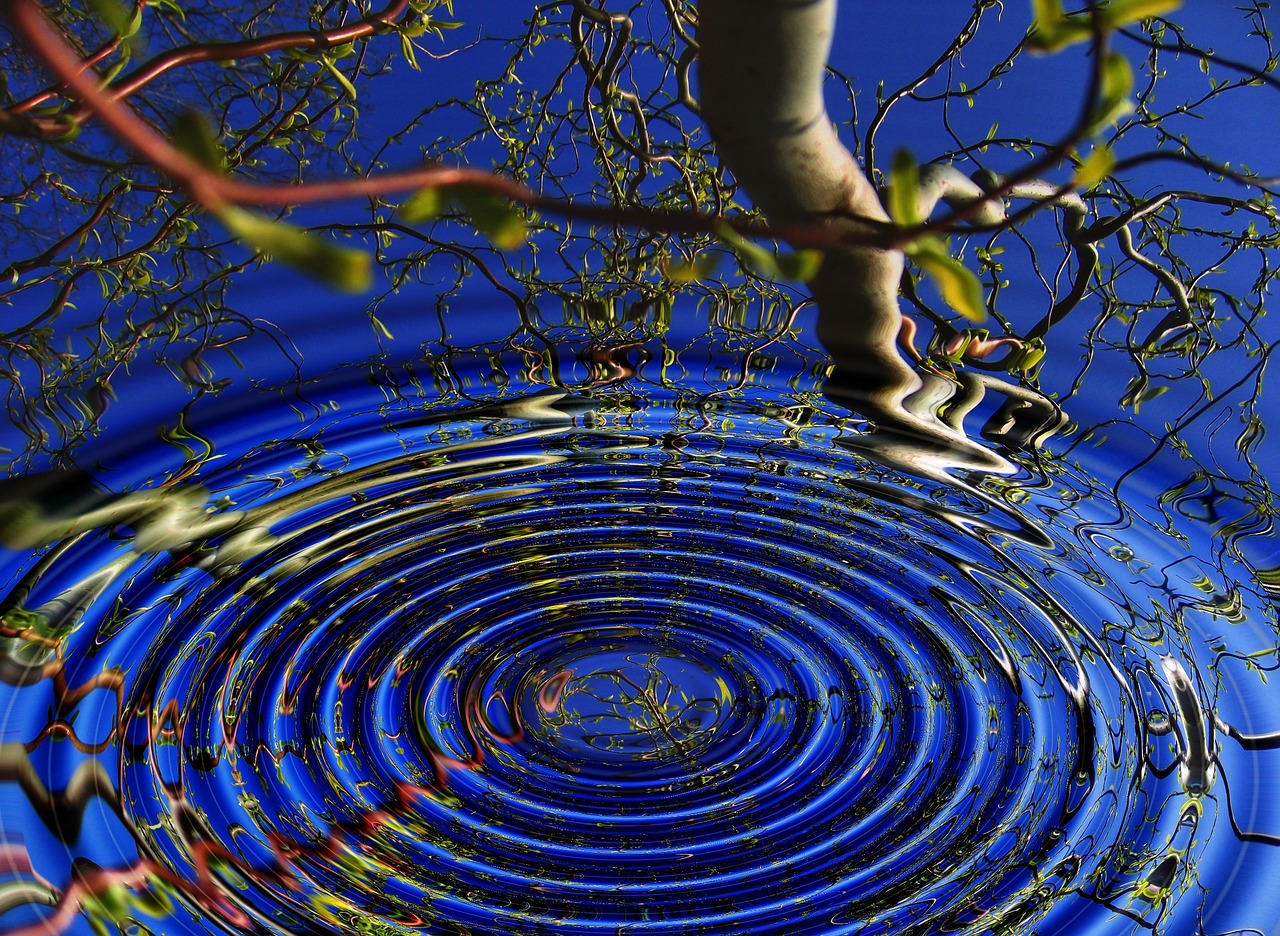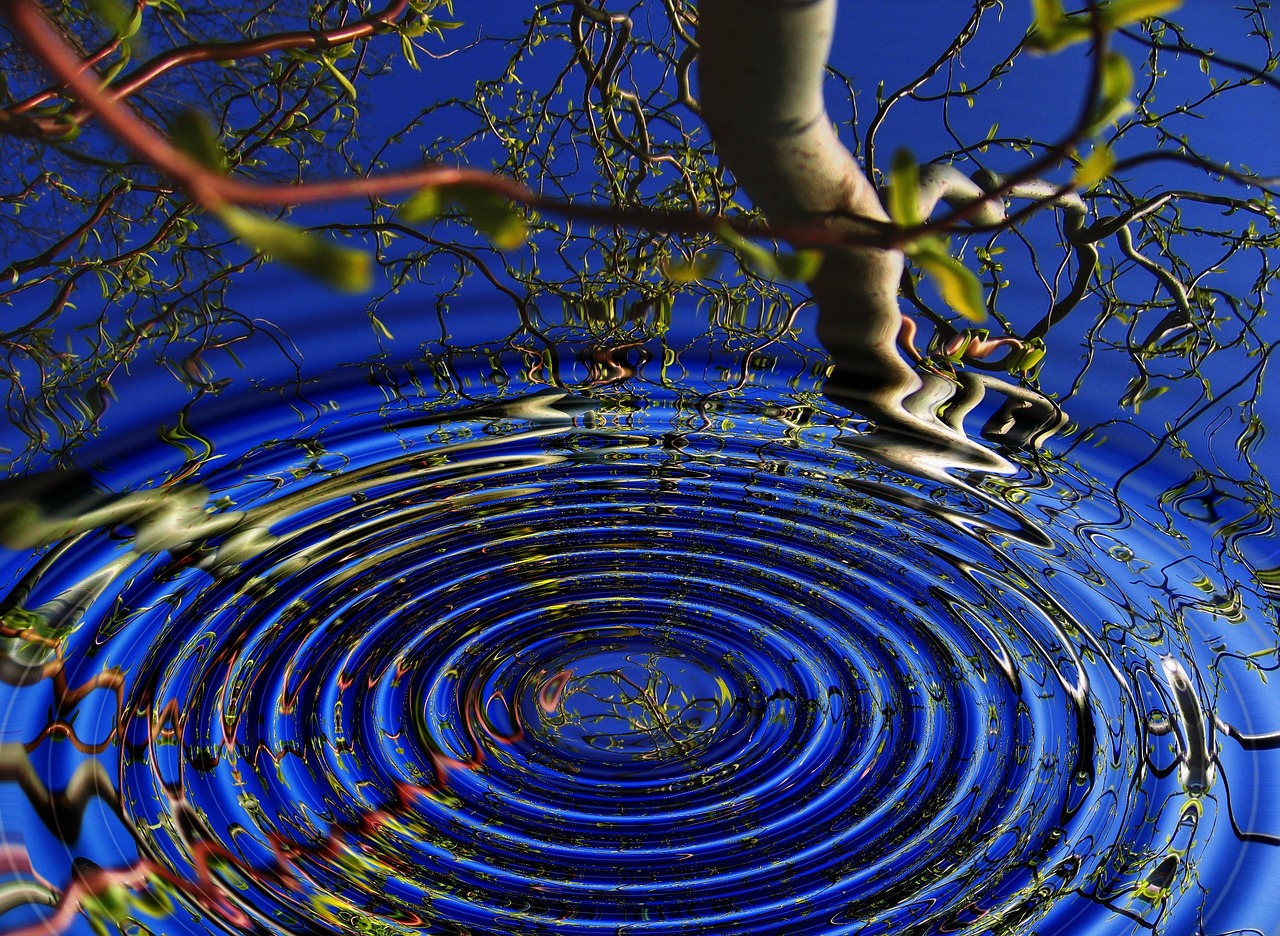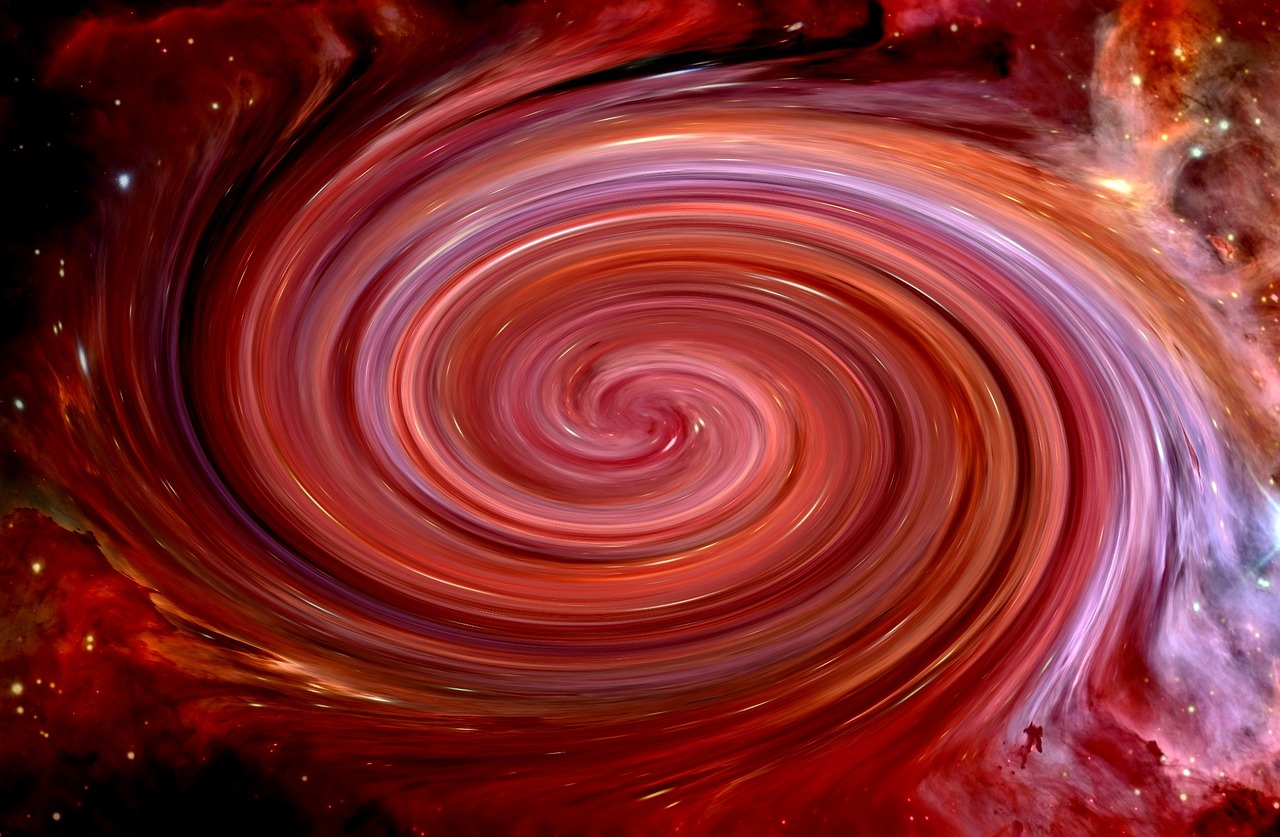Is Consciousness Quantifiable?
When we ponder the question of whether consciousness can be quantified, we delve into a realm that intertwines science, philosophy, and our very understanding of existence. Imagine trying to measure something as abstract and personal as a feeling or a thought—it's akin to trying to catch smoke with your bare hands. Consciousness is often described as the state of being aware of and able to think about one's own existence, thoughts, and surroundings. But can we really pin it down with numbers and metrics? This article embarks on a journey to explore various perspectives and scientific approaches to understanding this elusive phenomenon.
To tackle the question of quantifying consciousness, we first need to define what it is. Consciousness encompasses a broad spectrum of experiences, from the simple awareness of our surroundings to the complex inner dialogues we have with ourselves. Some definitions focus on subjective experiences—those personal snapshots of life that are unique to each individual. Others lean towards cognitive functions, emphasizing the mental processes that allow us to think, reason, and make decisions. The challenge lies in the fact that consciousness is not a one-size-fits-all concept. It varies from person to person and can shift dramatically depending on context, mood, and even the time of day. This complexity makes it difficult to arrive at a universally accepted definition, let alone a way to measure it.
In the quest to quantify consciousness, scientists have developed various methods that aim to shed light on this enigmatic state. Two prominent approaches are neuroimaging techniques and behavioral assessments. Each offers unique insights but also comes with its own set of challenges. For instance, neuroimaging technologies like fMRI (functional Magnetic Resonance Imaging) and EEG (Electroencephalography) allow researchers to observe brain activity in real-time. These methods can reveal which areas of the brain are active during different states of consciousness, providing a fascinating glimpse into the neural correlates of our thoughts and feelings. However, the interpretation of this data can be murky, and researchers often grapple with the question of whether these brain activities truly reflect conscious experiences or if they merely indicate underlying processes.
Neuroimaging methods have revolutionized our understanding of consciousness. By visualizing brain activity, scientists can correlate specific neural patterns with conscious states. For example, studies using fMRI have demonstrated that certain brain regions become active when individuals engage in self-reflection or experience strong emotions. However, while these technologies provide valuable data, they don't capture the full richness of subjective experience. The brain is a complex network, and isolating the neural correlates of consciousness is akin to trying to identify a single note in a symphony—it's just one part of a much larger composition.
Despite the advancements in neuroimaging, there are significant limitations. One major challenge is the ambiguity of interpretation. Just because a particular area of the brain lights up during a conscious experience doesn't mean it's solely responsible for that experience. Furthermore, neuroimaging cannot fully encapsulate the richness of subjective experiences. For instance, how do you measure the feeling of joy or the pang of sadness? These emotions are deeply personal and can vary widely from one individual to another, making them difficult to quantify through brain scans alone.
As technology continues to evolve, new methods for studying consciousness are emerging. Innovations such as machine learning algorithms are being applied to analyze brain data in ways that were previously unimaginable. These advancements may enhance our ability to measure and understand consciousness in the future, potentially leading to breakthroughs that could redefine how we view the mind. Imagine a world where we could not only observe brain activity but also interpret the nuances of consciousness in real-time!
Another avenue for measuring consciousness lies in behavioral assessments. These can include psychological tests, observational studies, and even self-reported questionnaires. By examining how individuals respond to various stimuli or tasks, researchers can glean insights into cognitive awareness and decision-making processes. For example, a simple test might ask participants to reflect on their thoughts while performing a task, providing a window into their conscious experience. However, like neuroimaging, these methods also have limitations, as they rely heavily on self-reporting, which can be subjective and influenced by various factors.
The quest to quantify consciousness isn't just a scientific endeavor; it also raises profound philosophical questions. Debates surrounding the nature and existence of consciousness have persisted for centuries, with thinkers like Descartes and Kant weighing in on the topic. One significant philosophical challenge is the "hard problem of consciousness," as articulated by David Chalmers. This problem questions how and why we have subjective experiences at all. Can we ever truly quantify something so inherently personal? This dilemma complicates the scientific quest to measure consciousness and invites further exploration into the intersection of science and philosophy.
Chalmers' hard problem highlights the difficulty of explaining why certain brain processes are accompanied by conscious experience. While we may identify brain activity associated with a thought or feeling, understanding the essence of that experience is a different matter. It's like knowing the ingredients of a dish but not being able to describe its flavor. This philosophical quandary suggests that quantifying consciousness may be an impossible task, as it involves more than just measuring brain activity—it requires an understanding of the very nature of experience itself.
Another intriguing philosophical perspective is panpsychism, which posits that consciousness is a fundamental aspect of all matter. This viewpoint challenges traditional notions of consciousness being exclusive to humans or complex organisms. If consciousness exists in some form in all entities, from rocks to plants, what implications does this have for our understanding of consciousness? Could it be that quantifying consciousness requires a broader lens—one that considers the interconnectedness of all things? This perspective opens up new avenues for exploration and invites us to rethink our assumptions about consciousness.
- Can consciousness be measured? While scientists use various methods, such as neuroimaging and behavioral assessments, measuring consciousness remains a complex challenge.
- What is the hard problem of consciousness? The hard problem refers to the difficulty of explaining why and how subjective experiences arise from brain processes.
- What is panpsychism? Panpsychism is the philosophical view that consciousness is a fundamental feature of all matter, suggesting that even simple entities may possess some form of consciousness.

Defining Consciousness
Understanding consciousness is like trying to catch smoke with your bare hands. It's elusive, complex, and often leaves us pondering its true essence. At its core, consciousness refers to our awareness of ourselves and our surroundings. But what does that really mean? Is it merely a collection of thoughts and perceptions, or is there something deeper at play?
To grasp consciousness, we need to explore its various interpretations. On one hand, we have the subjective experience—those personal, internal feelings and thoughts that shape our reality. Think of it as the unique soundtrack of your life, playing in your mind, filled with emotions, memories, and sensations. On the other hand, there are cognitive functions, which involve processes like attention, reasoning, and decision-making. These functions operate like the gears of a well-oiled machine, driving our actions and reactions in the world.
One of the challenges in defining consciousness lies in its multifaceted nature. It encompasses a range of experiences, from the mundane to the profound. For instance, consider the difference between being aware of your surroundings while walking down the street versus the deep, introspective awareness you might experience during meditation. This variety complicates our understanding and leads to questions such as:
- Is consciousness a spectrum, with varying degrees of awareness?
- Can it exist in different forms across species?
- Is there a fundamental essence of consciousness that transcends individual experiences?
Philosophers and scientists alike have grappled with these questions, attempting to pin down what consciousness truly is. Some argue that it is a byproduct of brain activity—a result of neurons firing and chemical signals transmitting. Others suggest that consciousness might be a more profound phenomenon, something that cannot be fully explained by biology alone. This brings us to the philosophical implications of consciousness, where debates often rage about its nature and existence.
In essence, defining consciousness is like trying to paint a moving target. It requires a blend of scientific inquiry and philosophical exploration. As we delve deeper into the nature of consciousness, we may find that its definition is not just a matter of words, but a reflection of our understanding of what it means to be alive, aware, and connected to the universe around us.

Scientific Approaches to Measuring Consciousness
When it comes to understanding consciousness, scientists have embarked on a fascinating journey to quantify this elusive phenomenon. Various scientific methods aim to unravel the complexities of conscious experience, and while the task is daunting, researchers are employing innovative techniques to get closer to the heart of the matter. Among these approaches, neuroimaging and behavioral assessments stand out as key players. But how effective are they in capturing the essence of consciousness? Let's dive deeper into these methods and explore their strengths and limitations.
Neuroimaging methods, such as functional Magnetic Resonance Imaging (fMRI) and Electroencephalography (EEG), have revolutionized our understanding of brain activity associated with different conscious states. fMRI, for instance, measures brain activity by detecting changes in blood flow, allowing researchers to visualize which areas of the brain are active during specific tasks or experiences. On the other hand, EEG records electrical activity in the brain, providing real-time data on brainwave patterns. These technologies have opened up a new frontier in consciousness research, offering insights into how our brains respond to stimuli and how different states of awareness manifest.
Despite the groundbreaking advancements in neuroimaging, there are significant limitations to consider. For one, the interpretation of data can often be ambiguous. Just because a particular area of the brain lights up during a conscious experience doesn’t necessarily mean that this area is solely responsible for that experience. Additionally, neuroimaging struggles to capture the full richness of subjective experiences. While we can observe brain activity, the intricate tapestry of emotions, thoughts, and sensations that accompany consciousness often remains elusive. This raises the question: can we ever truly measure something as deeply personal and subjective as consciousness?
As technology continues to evolve, so too do the methods available for studying consciousness. Newer approaches, such as machine learning algorithms and brain-computer interfaces, are beginning to show promise in enhancing our ability to measure and understand consciousness. These technologies can analyze vast amounts of data and identify patterns that might be missed by traditional methods. For example, brain-computer interfaces allow individuals to control devices using their thoughts, offering a glimpse into the direct relationship between brain activity and conscious intention. As these technologies develop, they may provide new avenues for exploring consciousness in ways we never thought possible.
In addition to neuroimaging, behavioral assessments offer another valuable perspective on measuring consciousness. Psychological tests, observational studies, and self-report questionnaires can provide insights into cognitive awareness and decision-making processes. These assessments often focus on how individuals respond to various stimuli, revealing patterns in thought processes and behavioral choices. By combining behavioral data with neuroimaging results, researchers can gain a more comprehensive understanding of consciousness. However, it’s important to note that these assessments also come with their own set of challenges, such as the potential for bias in self-reported data.
In summary, while the scientific approaches to measuring consciousness are diverse and evolving, they all share a common goal: to illuminate the mysteries of the mind. Neuroimaging and behavioral assessments each have their strengths and limitations, but together, they pave the way for a deeper understanding of what it means to be conscious. As we continue to explore these methods, we may find ourselves closer to answering one of humanity’s most profound questions: can consciousness truly be quantified?
- What is consciousness? Consciousness refers to the state of being aware of and able to think about one’s own existence, thoughts, and surroundings.
- Can consciousness be measured? Various scientific approaches, such as neuroimaging and behavioral assessments, aim to quantify consciousness, but challenges remain.
- What are neuroimaging techniques? Neuroimaging techniques, like fMRI and EEG, allow researchers to observe brain activity and its correlation with conscious states.
- What are the limitations of measuring consciousness? Limitations include interpretation ambiguities and the challenge of capturing subjective experiences fully.
- What is panpsychism? Panpsychism is a philosophical perspective suggesting that consciousness is a fundamental aspect of all matter.

Neuroimaging Techniques
Neuroimaging techniques have revolutionized our understanding of the brain and its connection to consciousness. These methods, including functional Magnetic Resonance Imaging (fMRI) and Electroencephalography (EEG), allow researchers to observe brain activity in real-time, providing a window into the intricate workings of conscious thought. Imagine being able to see the brain firing like a light show, where each flicker corresponds to a thought, emotion, or sensory experience. This is precisely what neuroimaging offers—an opportunity to visualize the invisible.
fMRI, for instance, measures brain activity by detecting changes in blood flow. When a specific area of the brain is more active, it requires more oxygen, and fMRI can highlight these areas with remarkable precision. This technique has been instrumental in identifying which parts of the brain are involved in various conscious states, such as decision-making, emotional responses, and sensory processing. On the other hand, EEG provides a different perspective by measuring electrical activity along the scalp. It captures rapid changes in brain activity, making it particularly useful for studying the dynamics of consciousness over milliseconds.
However, while these technologies are groundbreaking, they come with their own sets of challenges. For instance, fMRI can sometimes struggle with temporal resolution, meaning it might not capture the quick fluctuations of conscious thought as effectively as EEG. To illustrate this, consider a table comparing these two techniques:
| Technique | Strengths | Limitations |
|---|---|---|
| fMRI | High spatial resolution; identifies brain regions associated with consciousness. | Low temporal resolution; can miss rapid brain activity changes. |
| EEG | High temporal resolution; captures real-time brain activity. | Lower spatial resolution; difficult to pinpoint exact brain regions. |
As we delve deeper into the realm of consciousness, it's essential to recognize that these techniques, while illuminating, do not provide a complete picture. They can reveal correlations between brain activity and conscious experience, yet they often fall short of explaining the subjective nature of consciousness itself. This leads us to ponder: can we ever truly quantify something so inherently personal and elusive?
In summary, neuroimaging techniques serve as powerful tools in the quest to understand consciousness. They allow us to map the brain's activity and correlate it with our experiences, but they also remind us of the complexities involved in truly grasping the essence of what it means to be conscious. As technology advances, we may uncover even more layers of this profound mystery, but for now, we stand at the intersection of science and philosophy, asking questions that may never have definitive answers.

Limitations of Neuroimaging
While neuroimaging techniques like fMRI (functional Magnetic Resonance Imaging) and EEG (Electroencephalography) have revolutionized our understanding of the brain, they are not without their limitations. One significant challenge lies in the interpretation of the data these technologies provide. For instance, while fMRI can show areas of increased blood flow, which correlates with brain activity, it does not directly measure consciousness itself. Instead, it captures neural correlates, leaving us to wonder whether these correlates truly represent conscious experience or merely reflect background processes that are not consciously experienced.
Another limitation is the subjectivity of consciousness. Each individual's conscious experience is unique, making it difficult to create a one-size-fits-all model of consciousness. Neuroimaging methods often fail to account for this personal aspect, leading to ambiguous interpretations. For example, two individuals may exhibit similar brain activity patterns during a task, yet one may have a rich, vivid experience while the other feels indifferent. This variance raises questions about the extent to which neuroimaging can genuinely quantify consciousness.
Moreover, there are practical limitations associated with these technologies. Neuroimaging techniques can be expensive and time-consuming, often requiring participants to remain still for extended periods, which can affect the results. Motion artifacts can distort the data, further complicating the analysis. Additionally, the environments in which these scans are conducted can influence the outcomes, introducing external variables that may not be accounted for.
Lastly, while advancements in neuroimaging have provided valuable insights, they cannot fully capture the qualitative aspects of consciousness. The richness of subjective experience, including emotions, thoughts, and sensations, remains elusive. As researchers continue to explore the depths of consciousness, it is essential to recognize that while neuroimaging is a powerful tool, it is just one piece of a much larger puzzle.
In summary, the limitations of neuroimaging highlight the complexity of measuring consciousness. As we delve deeper into this fascinating field, we must remain cautious about the conclusions we draw from neuroimaging data and consider complementary approaches that can provide a more holistic view of consciousness.
- What is neuroimaging? Neuroimaging refers to a variety of techniques used to visualize the structure and function of the brain, including fMRI and EEG.
- Why can't neuroimaging fully measure consciousness? Neuroimaging captures neural correlates but does not directly measure subjective experience, which is unique to each individual.
- What are some limitations of fMRI? Limitations include high cost, the need for participants to remain still, and the potential for motion artifacts to distort results.
- How does consciousness relate to brain activity? While brain activity is associated with conscious states, it does not fully encompass the richness of subjective experience.

Emerging Technologies
As we dive deeper into the world of consciousness research, are proving to be game-changers. These innovations are not just enhancing our understanding of the brain; they are also opening up new avenues for measuring consciousness in ways we never thought possible. Imagine a future where we can quantify thoughts and emotions with precision, much like we measure temperature or pressure. Sounds like science fiction? Well, it’s becoming a reality!
One of the most exciting developments in this field is the advent of machine learning algorithms that analyze complex data from neuroimaging and behavioral studies. By training these algorithms to recognize patterns in brain activity, researchers can begin to correlate specific neural signatures with conscious experiences. This approach not only enhances our ability to measure consciousness but also provides a more nuanced understanding of how different brain regions interact during various states of awareness.
Another fascinating technology is the use of wearable devices equipped with advanced sensors that monitor physiological responses. These devices can track everything from heart rate to brainwave patterns in real-time, offering insights into a person's conscious state during different activities. For instance, during meditation, these devices can provide data showing how the brain shifts from a state of stress to one of relaxation, effectively quantifying the impact of mindfulness practices on consciousness.
Moreover, the integration of virtual reality (VR) is revolutionizing our understanding of consciousness. VR environments can create immersive experiences that replicate various conscious states, allowing researchers to study how individuals react in controlled yet realistic scenarios. This technology enables scientists to observe the effects of altered consciousness, such as in cases of dissociation or extreme focus, providing valuable data that traditional methods may overlook.
While these technologies are promising, they also raise questions about the ethical implications of measuring consciousness. As we develop tools that can potentially influence or manipulate conscious states, we must consider the moral responsibilities that come with such power. The line between measurement and manipulation can become blurred, and it’s crucial to navigate this territory with caution.
In summary, the future of consciousness research is bright, thanks to emerging technologies. From machine learning to wearable devices and virtual reality, these innovations are not only enhancing our understanding of consciousness but also paving the way for new methods of measurement. As we continue to explore these frontiers, the question remains: how far can we go in quantifying the essence of what it means to be conscious?
- Can consciousness be measured accurately?
While various methods exist, accurately measuring consciousness remains a complex challenge due to its subjective nature. - What role does technology play in understanding consciousness?
Emerging technologies such as neuroimaging and machine learning are crucial in providing insights into the brain's functioning during conscious states. - Are there ethical concerns regarding consciousness measurement?
Yes, as technology advances, ethical considerations about manipulation and privacy become increasingly important.

Behavioral Assessments
Behavioral assessments are fascinating tools used to explore the depths of consciousness by analyzing how individuals interact with their environment and make decisions. These assessments can range from psychological tests that gauge various cognitive functions to observational studies that scrutinize behavior in natural settings. By examining these behaviors, researchers can gain invaluable insights into an individual’s level of awareness, cognitive processing, and even emotional responses. It’s like peering into the mind’s window and seeing what truly lies behind the curtain of conscious thought.
One of the most compelling aspects of behavioral assessments is their ability to capture the nuances of conscious experience that might elude more traditional scientific methods. For instance, consider a simple scenario: if you ask someone to solve a math problem while also listening to music, their performance might reveal much about their focus and cognitive flexibility. This dual-task scenario illustrates how behavioral assessments can provide a glimpse into the workings of consciousness, as they require individuals to juggle multiple streams of information simultaneously.
Moreover, behavioral assessments often employ a variety of methodologies, including:
- Standardized Tests: These are structured assessments designed to measure specific cognitive abilities, such as memory, attention, and problem-solving skills.
- Observational Studies: Researchers may observe individuals in various settings to understand how they react to different stimuli or situations, revealing aspects of their conscious awareness.
- Surveys and Questionnaires: Self-reported data can provide insights into subjective experiences, allowing researchers to gauge how individuals perceive their own consciousness.
While behavioral assessments are undoubtedly useful, they also come with their own set of challenges. For instance, the subjective nature of consciousness means that what one person experiences might be vastly different from another’s experience, even in similar situations. This variability can complicate the interpretation of results and lead to questions about the reliability of the assessments themselves. Additionally, some critics argue that behavioral assessments might not fully encapsulate the richness of conscious experience, as they often rely on observable behavior rather than the inner workings of the mind.
Despite these limitations, behavioral assessments continue to play a crucial role in our understanding of consciousness. They provide a tangible way to explore abstract concepts, allowing researchers to bridge the gap between the subjective and the objective. As science progresses, integrating behavioral assessments with other methods, such as neuroimaging, could pave the way for a more comprehensive understanding of consciousness. This multidisciplinary approach may help unravel the complexities of the mind, leading to breakthroughs in both science and philosophy.
- What are behavioral assessments? Behavioral assessments are tools used to evaluate an individual's behavior and cognitive processes, often through psychological tests and observational studies.
- How do these assessments measure consciousness? They provide insights into cognitive awareness and decision-making processes by analyzing how individuals interact with their environment.
- What are the limitations of behavioral assessments? They may not capture the full richness of conscious experience, as they rely on observable behavior rather than subjective inner experiences.

Philosophical Perspectives
When we dive into the realm of on consciousness, we encounter a rich tapestry of thoughts and debates that challenge our understanding of the mind. Philosophers have long grappled with questions surrounding the nature, existence, and essence of consciousness. It's a bit like trying to catch smoke with your bare hands—elusive and complex. Some argue that consciousness is merely an epiphenomenon of brain activity, while others suggest it is a fundamental aspect of reality itself. This dichotomy sets the stage for a fascinating exploration of what it means to be conscious.
One of the pivotal discussions in this arena is centered around the hard problem of consciousness, a term coined by philosopher David Chalmers. Chalmers argues that while we can study the brain's functions and behaviors, we struggle to explain why and how these processes lead to subjective experiences—those rich, vivid feelings that make us human. Imagine trying to describe the taste of chocolate to someone who has never tasted it; that’s akin to the challenge posed by the hard problem. This dilemma raises profound implications for both science and philosophy, suggesting that even if we can measure brain activity, we might never fully grasp the essence of conscious experience.
Another intriguing perspective comes from the concept of panpsychism, which posits that consciousness is a fundamental feature of all matter. This view suggests that even atoms and particles possess some form of consciousness, albeit in a very rudimentary way. Think of it as a universal fabric woven with threads of awareness, where everything from a rock to a human being participates in the grand tapestry of consciousness. If this perspective holds any water, it could radically shift how we approach the quantification of consciousness. Instead of viewing it as a unique characteristic of humans or higher animals, we might need to consider how consciousness manifests across various entities.
Philosophers also engage in debates about the implications of consciousness for ethics and morality. If consciousness is a spectrum that extends beyond humans, what responsibilities do we hold towards other beings? This question opens up a Pandora's box of ethical considerations, from animal rights to the treatment of artificial intelligence. If an AI system exhibits signs of consciousness, should it be granted rights? The implications are staggering and highlight the interconnectedness of consciousness with our moral frameworks.
In summary, the philosophical perspectives on consciousness are as varied as they are profound. The hard problem of consciousness challenges our understanding of subjective experience, while panpsychism invites us to consider consciousness as a fundamental aspect of reality. As we delve deeper into these discussions, we find ourselves not just questioning the nature of consciousness, but also re-evaluating our place in the universe and our responsibilities towards other conscious beings.
- What is the hard problem of consciousness? The hard problem of consciousness refers to the difficulty of explaining why and how we have subjective experiences, despite understanding brain functions.
- What is panpsychism? Panpsychism is the philosophical view that consciousness is a fundamental aspect of all matter, suggesting that everything has some level of consciousness.
- How do philosophical perspectives influence scientific research on consciousness? Philosophical debates shape the questions researchers ask and the frameworks they use, influencing how consciousness is studied and understood in science.

The Hard Problem of Consciousness
The concept of the **Hard Problem of Consciousness**, coined by philosopher David Chalmers, dives deep into the perplexing nature of subjective experience. While science can explain the **mechanics** of brain activity and cognitive functions, it struggles to answer one fundamental question: why does consciousness feel the way it does? Imagine sipping your favorite coffee; the warmth, the aroma, and the flavor create a rich tapestry of experience that seems almost ineffable. This is what Chalmers refers to—the qualitative aspect of consciousness, often termed as 'qualia'.
In a world where we can measure brain waves and monitor neural activity through advanced technologies like fMRI and EEG, the question remains—how do these measurements translate to the **inner workings of our minds**? For instance, when we experience joy, sadness, or even the sensation of color, we can observe brain activity associated with these emotions. However, the **'why'** behind these experiences eludes us. It’s akin to trying to explain the taste of chocolate to someone who has never tasted it; you can describe the ingredients and the process, but the **essence** of the experience remains ungraspable.
Chalmers argues that the **hard problem** is not just a minor hurdle in neuroscience; it’s a fundamental issue that challenges our understanding of consciousness itself. While we can analyze the **neural correlates** of consciousness—those brain states that correlate with conscious experiences—this does not explain why those states are accompanied by subjective feelings. The distinction between the **easy problems** of consciousness, which involve explaining functions and behaviors, and the hard problem lies at the heart of ongoing debates in both science and philosophy.
To illustrate this further, let's consider a table that summarizes the differences between the easy and hard problems of consciousness:
| Aspect | Easy Problems | Hard Problem |
|---|---|---|
| Definition | Understanding functions and behaviors related to consciousness | Understanding the nature of subjective experience |
| Examples | Attention, perception, and cognitive processes | Qualia, the feeling of pain, or the experience of color |
| Scientific Approach | Can be studied through neuroimaging and behavioral tests | Challenges the limits of scientific explanation |
As we navigate through the complexities of consciousness, the hard problem raises significant implications for our understanding of the mind. It invites us to ponder whether consciousness can truly be quantified or if it remains an **intrinsic part of our existence** that defies measurement. For instance, if we were to discover a way to measure consciousness, would that mean we could also unlock the secrets of personal experience? Or would we merely be scratching the surface of a deeper mystery?
In conclusion, the hard problem of consciousness serves as a reminder of the profound depth of our mental experiences. It challenges scientists and philosophers alike to consider the **mysteries of existence** and the very nature of what it means to be conscious. As we continue to explore this enigmatic terrain, one thing is clear: consciousness is not just a puzzle waiting to be solved; it’s a rich, intricate tapestry woven into the fabric of our lives.

hard problem
This article explores whether consciousness can be measured or quantified, examining various perspectives, scientific approaches, and philosophical implications surrounding the nature of consciousness and its impact on our understanding of the mind.
Understanding consciousness requires a clear definition. This section delves into various interpretations, from subjective experiences to cognitive functions, highlighting the complexities involved in pinning down what consciousness truly means.
Various scientific methods aim to quantify consciousness, including neuroimaging and behavioral assessments. This section reviews these techniques and discusses their effectiveness in capturing the elusive nature of conscious experience.
Neuroimaging methods like fMRI and EEG provide insights into brain activity associated with conscious states. This subsection examines how these technologies contribute to our understanding of consciousness and its measurement.
While neuroimaging offers valuable data, it has limitations. This part discusses challenges such as interpretation ambiguity and the inability to fully capture subjective experiences within neural correlates.
Advancements in technology are paving new paths for consciousness research. This section highlights innovative approaches that may enhance our ability to measure and understand consciousness in the future.
Behavioral assessments, including psychological tests and observational studies, provide another avenue for measuring consciousness. This subsection explores how these methods reveal insights into cognitive awareness and decision-making processes.
Philosophical debates surrounding consciousness often question its nature and existence. This section discusses key philosophical arguments that challenge or support the notion of quantifying consciousness.
David Chalmers' of consciousness is a pivotal concept in the philosophy of mind that raises profound questions about the nature of subjective experience. While scientists can measure brain activity associated with conscious states, the asks why and how these neural processes give rise to the rich tapestry of our experiences. It’s like trying to understand how a symphony emerges from a series of notes played on a piano; the notes are there, but the beauty and emotion of the music seem to transcend mere sound.
This dilemma complicates our quest to quantify consciousness because it highlights a significant gap between objective measurements and subjective experiences. For instance, consider the difference between knowing the mechanics of a car and truly understanding the thrill of driving it. The former can be measured and quantified, while the latter is inherently personal and elusive.
Chalmers argues that even if we develop a comprehensive understanding of the brain's functions, we might still be left with the question: Why does consciousness feel like something? This question is at the heart of the hard problem and serves as a barrier to fully grasping consciousness through scientific methods alone.
In essence, the hard problem suggests that there might be aspects of consciousness that are fundamentally unquantifiable, leading to a broader philosophical inquiry into the nature of existence and experience. This raises additional questions:
- Can consciousness exist without a physical substrate?
- Is it possible that consciousness is an intrinsic property of the universe, akin to mass or energy?
- How do we reconcile subjective experiences with objective measurements?
As we navigate through the complexities of consciousness, the hard problem remains a significant hurdle, pushing us to rethink our approaches and assumptions about what it means to be conscious.
Panpsychism posits that consciousness is a fundamental aspect of all matter. This section examines this perspective and its potential implications for the quantification of consciousness across different entities.
- What is the hard problem of consciousness?
The hard problem refers to the challenge of explaining why and how we have subjective experiences, even if we understand the brain's functions. - Can consciousness be measured?
While scientists use various methods to measure aspects of consciousness, the subjective nature of experience presents significant challenges. - What are neuroimaging techniques?
Neuroimaging techniques, such as fMRI and EEG, are used to visualize brain activity and its correlation with conscious states.

raises critical questions about subjective experience. This subsection explores how this dilemma complicates the quest to quantify consciousness and its implications for science and philosophy.
This article explores whether consciousness can be measured or quantified, examining various perspectives, scientific approaches, and philosophical implications surrounding the nature of consciousness and its impact on our understanding of the mind.
Understanding consciousness requires a clear definition. This section delves into various interpretations, from subjective experiences to cognitive functions, highlighting the complexities involved in pinning down what consciousness truly means.
Various scientific methods aim to quantify consciousness, including neuroimaging and behavioral assessments. This section reviews these techniques and discusses their effectiveness in capturing the elusive nature of conscious experience.
Neuroimaging methods like fMRI and EEG provide insights into brain activity associated with conscious states. This subsection examines how these technologies contribute to our understanding of consciousness and its measurement.
While neuroimaging offers valuable data, it has limitations. This part discusses challenges such as interpretation ambiguity and the inability to fully capture subjective experiences within neural correlates.
Advancements in technology are paving new paths for consciousness research. This section highlights innovative approaches that may enhance our ability to measure and understand consciousness in the future.
Behavioral assessments, including psychological tests and observational studies, provide another avenue for measuring consciousness. This subsection explores how these methods reveal insights into cognitive awareness and decision-making processes.
Philosophical debates surrounding consciousness often question its nature and existence. This section discusses key philosophical arguments that challenge or support the notion of quantifying consciousness.
David Chalmers' hard problem raises critical questions about subjective experience. When we think about consciousness, we often find ourselves grappling with questions that seem to slip through our fingers like sand. How can we truly understand what it feels like to experience something, like the taste of chocolate or the warmth of the sun on our skin? These subjective experiences are deeply personal and unique to each individual, making them incredibly challenging to quantify in any meaningful way.
This dilemma complicates the quest to quantify consciousness because it highlights a significant gap between objective measurements—like brain activity—and the rich, qualitative experiences that define what it means to be conscious. For instance, while a neuroimaging scan can show us which areas of the brain light up during a specific task, it doesn't tell us anything about the actual experience of performing that task. It's akin to reading a recipe without ever tasting the dish; you might know the ingredients, but you miss out on the flavor.
Furthermore, the implications of this hard problem extend far beyond science and seep into the realms of philosophy. If consciousness is fundamentally subjective, can it ever be fully understood or quantified? This question leads us to ponder the nature of reality itself. Are we simply biological machines, or is there something more profound at play? The rich tapestry of consciousness challenges us to reconsider our definitions and frameworks, urging us to explore the depths of human experience.
Panpsychism posits that consciousness is a fundamental aspect of all matter. This section examines this perspective and its potential implications for the quantification of consciousness across different entities.
- What is consciousness? Consciousness refers to the state of being aware of and able to think about one's own existence, thoughts, and surroundings.
- Can consciousness be measured? While various scientific methods attempt to quantify consciousness, such as neuroimaging and behavioral assessments, the subjective nature of consciousness presents significant challenges.
- What is the hard problem of consciousness? The hard problem of consciousness, introduced by David Chalmers, questions how subjective experiences arise from physical processes in the brain.
- What is panpsychism? Panpsychism is the philosophical view that consciousness is a fundamental and ubiquitous feature of the universe, suggesting that all matter has some form of consciousness.

Panpsychism and Consciousness
When we dive into the intriguing waters of panpsychism, we encounter a perspective that shakes the very foundations of how we perceive consciousness. At its core, panpsychism suggests that consciousness is not just a feature of complex brains but is instead a fundamental quality of all matter. Imagine a world where even the tiniest particles possess some form of consciousness. This idea, while seemingly radical, invites us to rethink the relationship between mind and matter in profound ways.
To understand panpsychism better, let's consider its implications. If consciousness exists in all entities, from the smallest atom to the largest galaxy, what does this mean for our understanding of consciousness itself? It challenges the notion that consciousness is exclusive to humans or higher animals, opening the door to the possibility that everything around us, including inanimate objects, might have a degree of awareness. This perspective can be both fascinating and unsettling, as it forces us to reconsider our interactions with the world.
One of the most compelling aspects of panpsychism is its potential to bridge the gap between the subjective and objective realms. Traditional scientific approaches often struggle to quantify consciousness because they rely on observable behavior and neural correlates. In contrast, panpsychism posits that consciousness is an intrinsic property of all things, suggesting that we might need to expand our methodologies to account for this fundamental aspect of existence.
Despite its allure, panpsychism faces significant challenges. Critics argue that attributing consciousness to all matter can lead to an infinite regress of consciousness levels, making it difficult to pinpoint where consciousness truly begins or ends. Moreover, how do we measure or quantify a consciousness that exists in something as simple as a rock? These questions highlight the complexities involved in adopting a panpsychist view.
Nevertheless, proponents of panpsychism, like philosopher Galen Strawson, argue that this view provides a more coherent explanation of consciousness than traditional materialism, which often struggles to address the qualitative aspects of conscious experience. They suggest that by accepting consciousness as a fundamental property of matter, we might unlock new avenues for understanding both the universe and our place within it.
In summary, panpsychism offers a thought-provoking lens through which to view consciousness. By suggesting that consciousness is a universal trait, it challenges us to rethink our assumptions about awareness and existence. As we continue to explore the depths of consciousness, panpsychism serves as a reminder that our understanding of the mind is still very much a work in progress, inviting both scientific inquiry and philosophical debate.
- What is panpsychism? - Panpsychism is the philosophical view that consciousness is a fundamental and ubiquitous feature of the universe, present in all matter.
- How does panpsychism relate to consciousness? - It suggests that consciousness is not limited to complex organisms but is inherent in all entities, encouraging a broader understanding of awareness.
- What are the criticisms of panpsychism? - Critics argue that it complicates the understanding of consciousness and raises questions about how to measure consciousness in simpler entities.
- Who are some notable proponents of panpsychism? - Philosophers like Galen Strawson and Philip Goff advocate for panpsychism and explore its implications for understanding consciousness.
Frequently Asked Questions
- Can consciousness be measured?
Measuring consciousness is a complex challenge. While various scientific methods like neuroimaging and behavioral assessments attempt to quantify aspects of consciousness, the subjective nature of conscious experience makes it difficult to capture fully. So, while we can gather data related to brain activity and behavior, quantifying the essence of consciousness remains elusive.
- What are neuroimaging techniques?
Neuroimaging techniques, such as fMRI (functional Magnetic Resonance Imaging) and EEG (Electroencephalography), are used to observe brain activity associated with different conscious states. These methods provide valuable insights into how our brain functions during various tasks, but they also come with limitations, including the challenge of interpreting the data accurately.
- What are the limitations of neuroimaging?
While neuroimaging offers a window into brain activity, it has significant limitations. For instance, it can struggle to interpret the nuances of subjective experiences, and the data can be ambiguous. This means that while we can see brain activity, we can't always understand what that activity means in terms of conscious experience.
- What are behavioral assessments in the context of consciousness?
Behavioral assessments involve psychological tests and observational studies to gauge aspects of consciousness. These methods help researchers understand cognitive awareness and decision-making processes. By analyzing how individuals behave in various scenarios, scientists can gain insights into their conscious experiences.
- What is the "Hard Problem of Consciousness"?
The "Hard Problem of Consciousness," coined by philosopher David Chalmers, refers to the difficulty of explaining why and how we have subjective experiences. While we may understand the mechanisms behind brain functions, the question of why those functions result in conscious experience remains a profound mystery.
- What is panpsychism?
Panpsychism is the philosophical view that consciousness is a fundamental aspect of all matter. This perspective suggests that everything, from rocks to humans, possesses some form of consciousness. If this idea holds true, it could reshape our understanding of consciousness and its quantification across different entities.


















